Without federal recognition, coastal tribes struggle to access FEMA aid after Ida
On a Saturday afternoon in October in Dulac, residents drove through the Anchor Foursquare Church parking lot to pick up supplies for Hurricane Ida recovery. At the end of the line, Grand Caillou/Dulac Band of Biloxi-Chitimacha-Choctaw Chief Shirell Parfait-Dardar and Loyola University of New Orleans law student Emily Torrey handed out items, including hurricane coping kits for kids and an aid application for residents.
Debris lingered everywhere: toppled trailers, downed trees, boats sunk in the bayou. Below the Gulf Intracoastal Waterway in Terrebonne Parish, an estimated 60% or more of the homes were destroyed by Ida. Many Native American residents who reside down the bayou said it looked like a bomb went off.
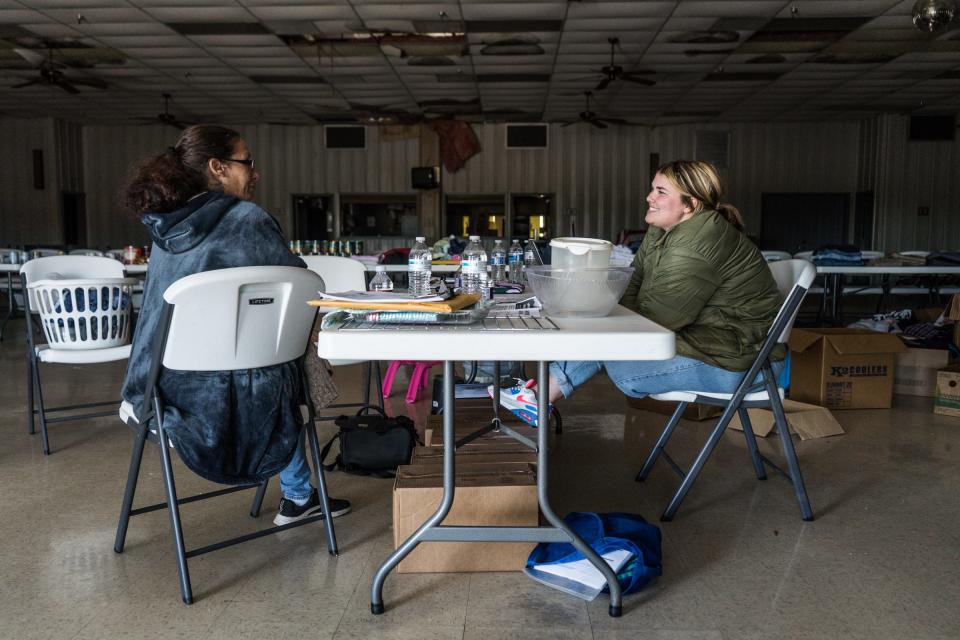
Parfait-Dardar’s unfinished home was destroyed; the foundation shifted and the roof and walls blew off. She understood the challenges of applying for aid, so she wanted to spend time checking with tribal members and other residents nearby about navigating Federal Emergency Management Agency processes.
More: Vulnerable students still hitting obstacles three months after Hurricane Ida
The goal was to collect information from residents to use for coordinating volunteer crews who are coming to help with mucking, gutting and rebuilding in lieu of substantial government assistance.
“It’s hard, but I knew what I was getting into," Parfait-Dardar said. "My elders did the same, you know? Resiliency comes from them.”
The Grand Caillou/Dulac Band of Biloxi-Chitimacha-Choctaw is a state-recognized tribe, so they don’t have a direct relationship with FEMA. Federally recognized tribes — self-governed, sovereign nations — can request a presidential emergency or major disaster declaration independently from states, apply for public assistance for recovery directly, and access grants repairs or projects that help prevent future damage.
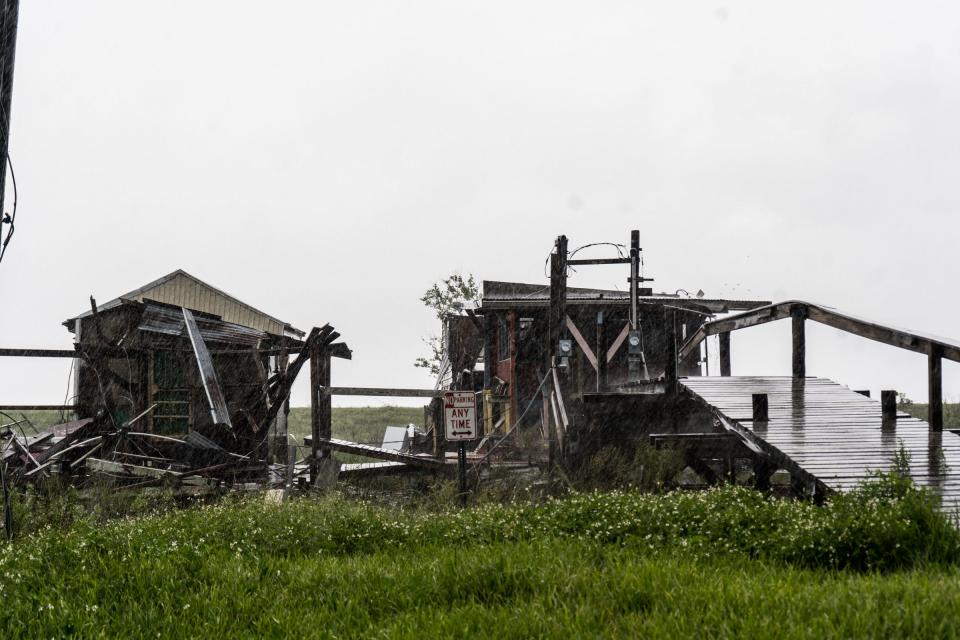
Without federal recognition, many of Louisiana’s coastal tribes are left navigating a complex bureaucracy in a moment of crisis. Tribal leaders said that since Ida — one of the most powerful hurricanes to hit the state in recorded history — they have had to bounce among parish, state and federal agencies in attempts to get crucial recovery resources.
They described issues accessing both major types of FEMA aid:
Individual assistance for tribal members, which provides money to households for rebuilding and personal property loss.
Public assistance that reimburses tribes for services such as debris removal and infrastructure repair.
According to a June 2020 FEMA policy, state-recognized tribes should be treated as local governments rather than tribal governments, with a nation-to-nation relationship with the federal government.
Coastal Louisiana tribal leaders are calling for that to change.
“We need direct interaction with FEMA as community leaders, as tribal leaders,” Parfait-Dardar said. “Our people and community as a whole are not getting all of the information that they need to be able to do the repairs and do the rebuilding and heal the community so that we can become contributing parts of society again.”
Long fight for federal recognition
Indigenous peoples in coastal Louisiana have sought federal recognition for their tribes since the 1970s, at first as one larger unit and later separately. The United Houma Nation, the Biloxi-Chitimacha Confederation of Muskogees and the Pointe-au-Chien Indian Tribe all have active petitions with the U.S. Department of the Interior’s Office of Federal Acknowledgement.
The federal recognition process requires tribes to essentially prove their history — their ancestry and political authority, among other factors — to the U.S. government. They often have to produce written accounts from white historians and anthropologists, themselves involved in the subjugation and erasure of Indigenous communities, if they exist at all.
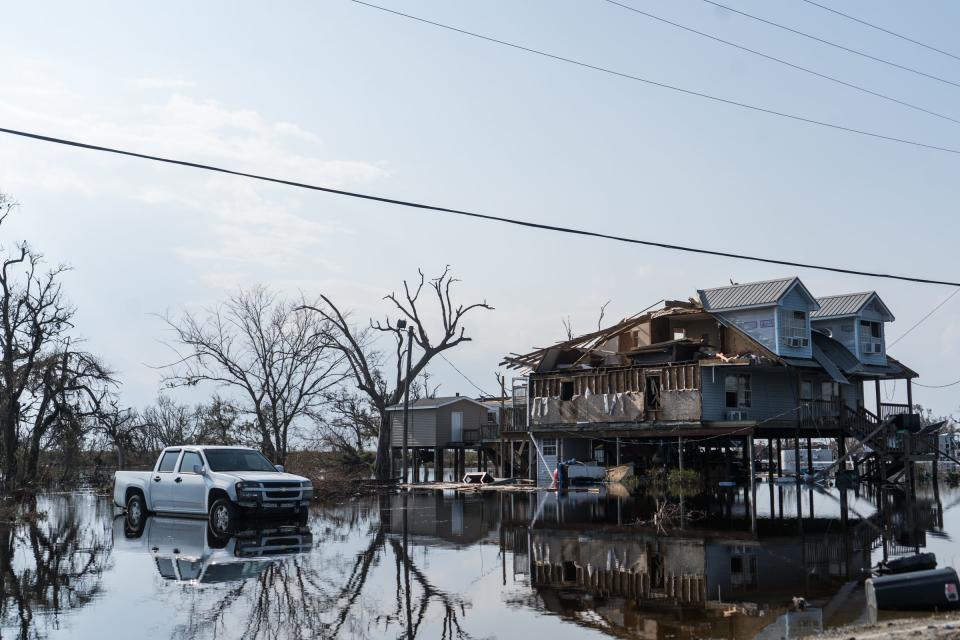
“Before 1907 there were no ethnographers or anyone else who had been to the lower parishes of Terrebonne and Lafourche to take any firsthand accounts of native people,” Patty Ferguson-Bohnee, a member of the Pointe-au-Chien Indian Tribe and a law professor at Arizona State University, said at a talk at Tulane University in October.
Repeated disasters — multiple hurricanes and the 2010 Deepwater Horizon oil spill — have delayed Pointe-au-Chien’s ability to gather information and respond to steps in the petition process required for federal recognition, Ferguson-Bohnee said.
'Snail's pace': Hurricane Ida temporary housing program slammed by state, local lawmakers
Storms have also damaged documents important for federal recognition. Kathleen Bergeron, an archivist for and member of the United Houma Nation, said enrollment records were damaged by Ida. The building housing the records sustained roof and water damage.
“As soon as we could get into the building, we boxed it all up to save it,” she said. “It’s the history of our tribe. It’s the history of our people.”
Federal recognition would help with land protection, maintaining sacred sites and working directly with federal entities after climate disasters.
“Federal recognition is key to basically our continued existence and survival,” Ferguson-Bohnee said at her Tulane talk.
Stuck in red tape
Many Pointe-au-Chien tribal members said that after Ida, they had to travel to Montegut or Houma, about 45 minutes away from Pointe-aux-Chenes, then wait four to five hours to speak with a FEMA representative about individual assistance.
More than 90 Pointe-au-Chien families’ homes were destroyed, and many were simultaneously dealing with electricity and water outages after the storm.
“People still don’t have very good phone service down there,” Ferguson-Bohnee said in October. “And you don’t have any internet service at all.”
There was also a language barrier. Some elders do not speak English and needed to find others to help them access and fill out forms. They would have benefited from having a representative fluent in Indian French to assist them.
Pointe-aux-Chenes is split between Terrebonne and Lafourche parishes. The tribe has had to work with both local agencies since Ida, and leaders say local officials are bouncing them back and forth. The tribe has had to submit its list of names multiple times to the state and parishes in attempts to get temporary housing from a new state program.
On the Lafourche side of the bayou, many members live on familial properties that aren’t passed down through formal deeds. FEMA recently updated its policies for proving ownership and occupancy — a requirement for receiving aid to rebuild — allowing for additional forms of documentation.
Chief Albert Naquin of the Isle de Jean Charles Band of Biloxi-Chitimacha-Choctaw —which also lacks federally recognition — said he is helping members individually, trying to secure campers for temporary housing with money donated directly to the tribe. He knows that without government assistance, it won’t be enough to help everyone.
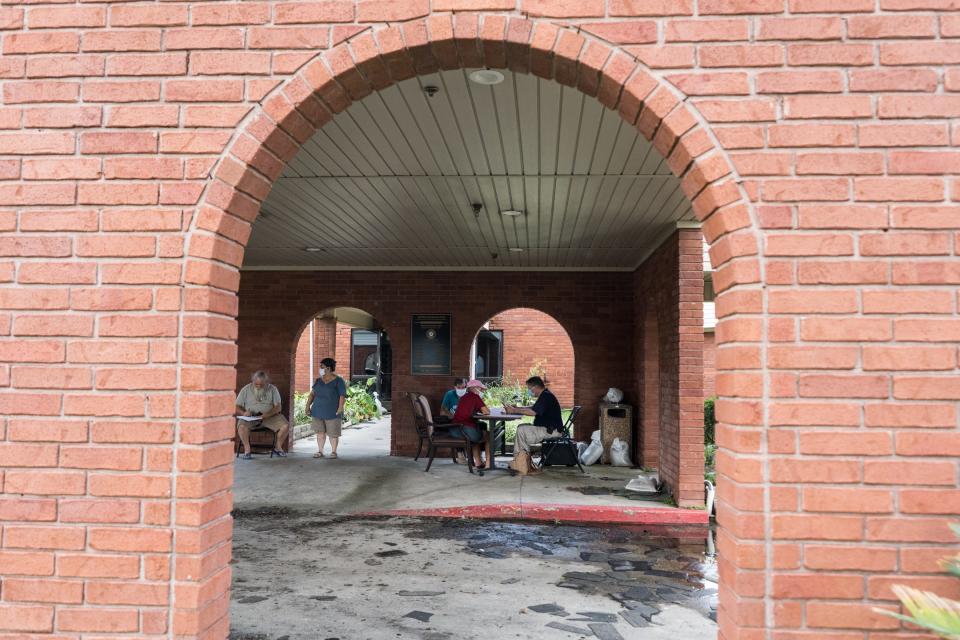
Public assistance funding has also been an arduous process for state-recognized tribes, and their experiences vary. Ferguson-Bohnee, of the Pointe-au-Chien Indian Tribe, was rerouted to multiple FEMA and state employees when she started seeking help for multiple coastal tribes in September.
Ferguson-Bohnee and Parfait-Dardar of the Grand Calliou/Dulac have yet to submit public assistance requests for their tribes but plan to do so before the deadline on Dec. 28.
FEMA spokeswoman Debra Young said in an email that the agency's public assistance staff generally only reaches out to entities once they have submitted a request through the state, which then submits them to FEMA.
FEMA employees were stationed at the headquarters of the United Houma Nation — the largest coastal tribe, with 17,000 members in a six-parish area — helping long lines of tribal members and other residents apply for individual assistance for a month following the storm.
Bergeron, from the United Houma Nation, worked for FEMA for over a decade doing environmental and historic preservation. She submitted a public assistance request to reimburse the tribe for the costs of restoring its enrollment records, as well as some of rebuilding material expenses.
Young said tribes lacking federal recognition must apply for federal disaster assistance through the parish and state, “the same as other municipalities within the disaster area.” Ultimately, she said, “the same FEMA programs and services are available to individual members and the tribal governments of both federally recognized and other tribes under a major disaster declaration.”
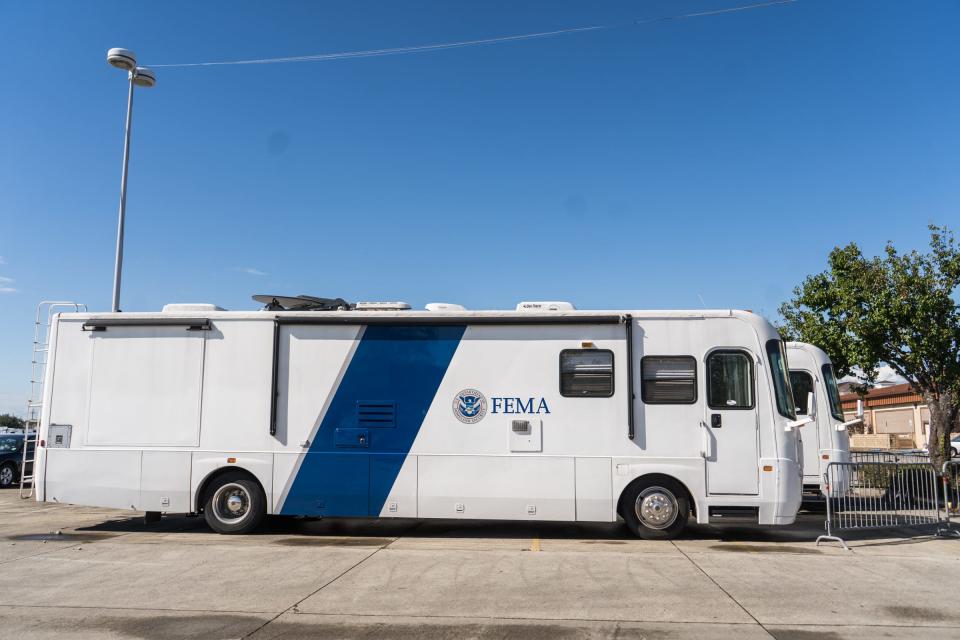
To seek assistance for the United Houma Nation, Bergeron had to submit paperwork to the state via an online portal for the Governor’s Office of Homeland Security and Emergency Preparedness to get it approved and forwarded to FEMA. FEMA approved the request but classified the tribe as a private nonprofit organization, even though the agency’s policy says state-recognized tribes should be treated as local governments. Private nonprofit organizations must provide significantly more paperwork to prove their aid eligibility.
Bergeron said the tribe has since clarified its classification with FEMA. But the back-and-forth with different agencies has been tiresome.
“As a state-recognized tribe, we have no clout with the federal government,” she said.
“These are complex issues,” Chaunda Mitchell, spokeswoman for the Governor’s Office of Indian Affairs, wrote in an email. “We are working diligently with the tribes on a daily basis through a variety of state, federal and local partners to communicate and assess their needs and provide the necessary support.”
Bergeron is confident the tribe will be able to get the aid, eventually. But reimbursement might not come for months or longer, and the United Houma Nation is urgently trying to repair buildings before winter.
“We’re still putting tarps on roofs,” she said.
Pushing for reform
Six weeks after the storm, the National Congress of American Indians Annual passed a resolution calling for increased resources for frontline tribes in the wake of Ida, distribution of federal money directly to all affected tribes and support of “tribally led decisions to adapt to the changing circumstances including adaptation, rebuilding, or resettlement.”
Through the resolution, the organization can advocate for policy changes. Ferguson-Bohnee said the move shows that tribes support each other and could potentially lead to critical investment in disaster and climate change preparation.
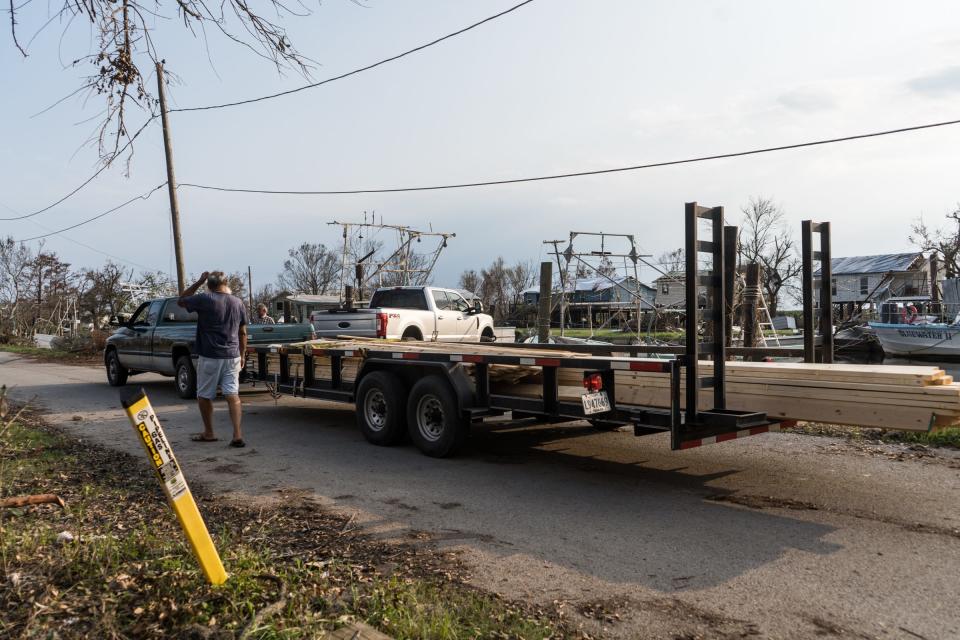
It’s just one part of a long-term vision, several leaders said.
“It is an opportunity to use our community, as an example of how to build a resilient coastal community that’s reflective of the tribe, and its way of life that could be replicated by other coastal communities,” Ferguson-Bohnee said.
Torrey, the Loyola Law student, is helping provide grassroots legal support and working on a project to create more documentation for the Grand Caillou/Dulac tribe to help navigate future disasters.
“You need to understand how the community functions in order to properly assess them. And you need to know what their risks are. It takes community investment and that really saves in the long run,” Parfait-Dardar said. “And it enables us to be able to assist others better. We should be constantly trying to improve.”
— This story was done in partnership with Southerly Magazine. Carly Berlin is Southerly’s Gulf Coast correspondent. Kezia Setyawan is a staff writer at The Houma Courier and Thibodaux Daily Comet.
This article originally appeared on The Courier: Without federal recognition, coastal tribes struggle to access FEMA aid after Hurricane Ida

